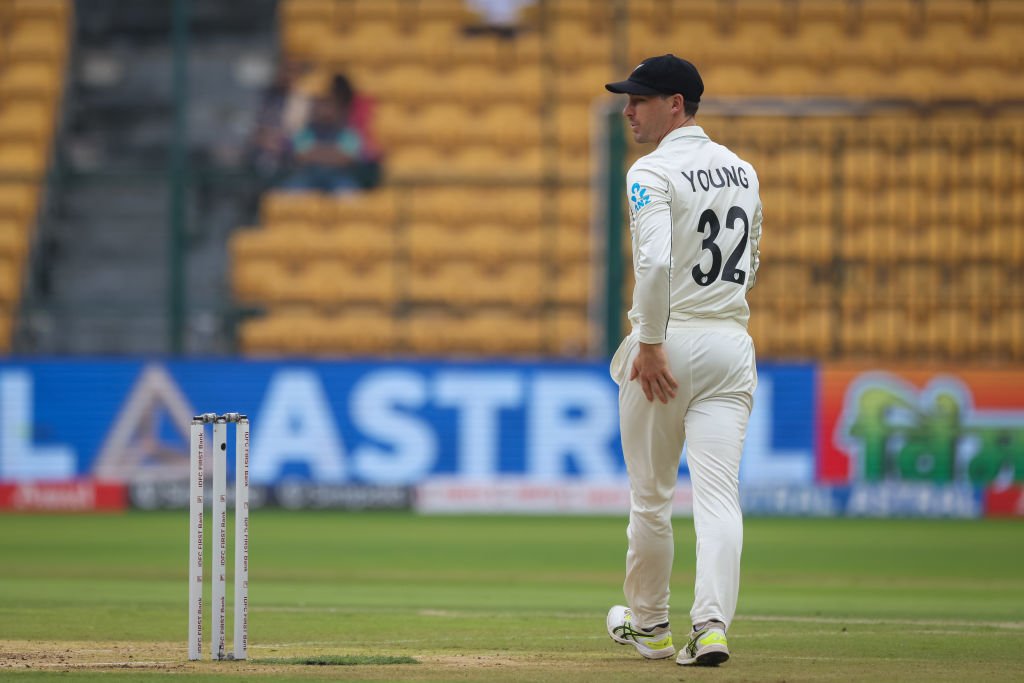
New Zealand cricket has a challenging road ahead in the Test format, with a key focus on their lineup and individual players’ roles as they prepare for upcoming high-stakes series. As the Black Caps build toward crucial contests, cricket commentator and former wicketkeeper Ian Smith has recently voiced his confidence in Will Young, advocating for the right-handed batsman to take up the crucial No.3 spot in New Zealand’s Test team.
The No.3 position is traditionally a critical slot in Test cricket, responsible for balancing the batting lineup and providing stability if an opener is dismissed early. It’s a position that requires technical skill, mental resilience, and the ability to adapt to various game situations. New Zealand, like any competitive Test-playing nation, prioritizes finding a dependable batsman for this role—someone capable of solidifying the innings and setting a strong foundation for the middle order.
Will Young’s Cricketing Journey and Development
Will Young’s journey in New Zealand cricket has been marked by a steady climb through domestic ranks and consistent performances that finally led to his international debut. Known for his technique and composed approach at the crease, Young first rose to prominence in domestic cricket with Central Districts, where he demonstrated a strong batting ability in various formats. His performances, especially in first-class cricket, have been impressive, reflecting his potential as a long-term Test player for New Zealand.
Young’s domestic statistics underline his capabilities. He boasts an impressive first-class average, demonstrating his ability to play long innings—a key requirement for a No.3 batsman. Young has consistently delivered against high-caliber bowling attacks in domestic cricket, showcasing his skill in both defensive play and scoring opportunities. His ability to adapt to different bowlers and conditions adds to his value as a versatile and resilient player, traits crucial for an international No.3 batsman.
Ian Smith’s Endorsement and Insights on Young’s Suitability
Ian Smith’s endorsement of Young for the No.3 slot has added weight to the conversation about New Zealand’s batting lineup. Smith, a former wicketkeeper-batsman and respected voice in cricket commentary, has deep insights into New Zealand’s game and players. His opinion often resonates with fans and analysts, as he offers perspectives rooted in experience and a deep understanding of the game’s demands.
In discussing Young’s potential for the No.3 role, Smith highlighted the batsman’s solid technique, mental toughness, and ability to build an innings from difficult situations. Smith believes that Young has both the skill set and mindset required to thrive in this position. His support for Young signals trust in the batsman’s ability to handle the high pressure associated with the role, where one must frequently confront a fresh bowling attack and adapt quickly to maintain the team’s stability.
The Importance of Stability at No.3 for New Zealand
The No.3 position holds strategic importance in Test cricket. This spot is often tasked with either countering a strong bowling attack after an early dismissal or capitalizing on a solid opening partnership to set the stage for the middle order. A stable No.3 batsman can play an anchor role, allowing the rest of the lineup to bat more freely and aggressively if the conditions permit. For New Zealand, who have a solid core of middle-order players like Kane Williamson and Tom Latham, having a dependable No.3 adds depth and confidence to the batting order.
In recent years, New Zealand has rotated players in this position, seeking the right fit to offer consistent performance. With Smith’s endorsement, Young now has the opportunity to cement his place if he can deliver in the upcoming series. This confidence boost from a figure like Smith could propel Young to elevate his game, as he looks to become a stable presence for New Zealand in this pivotal batting role.
Challenges Ahead for Young and the Black Caps
New Zealand’s upcoming Test series will be a rigorous examination of Young’s readiness for the No.3 spot. The Black Caps will face challenging conditions abroad, where they must contend with world-class bowling attacks on pitches that can often be unforgiving for batsmen. In these high-stakes series, Young’s technique and mental resilience will be put to the test, as he will need to face the new ball if an opener falls early and adapt to various pitch conditions.
Young’s performances in these conditions will be crucial not only for his career but also for New Zealand’s prospects in the World Test Championship (WTC). New Zealand’s success in the WTC largely depends on having a robust top order that can provide solid starts and handle pressure from opposing bowling lineups. Young’s ability to step up at No.3 could be a game-changer for the team, providing the stability they need to build competitive scores and compete against top-tier teams.

